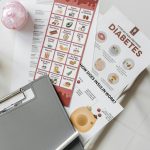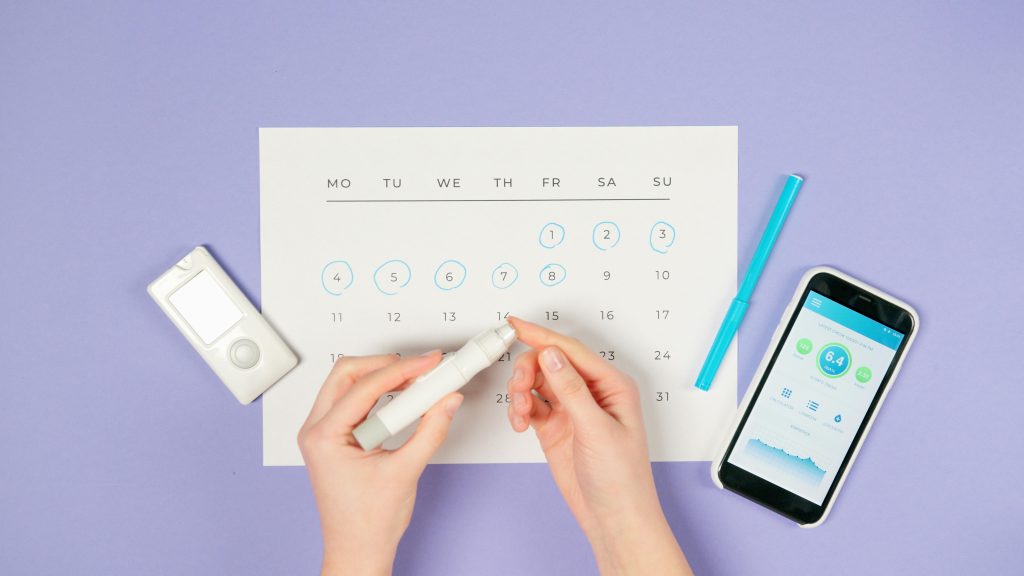Managing Type 2 Diabetes effectively is crucial for maintaining a healthy and active life. This chronic condition, characterized by high blood sugar levels, can lead to serious health complications if not properly managed. Understanding the basics of diabetes management can empower you to take control of your health and prevent complications.
What is Type 2 Diabetes?
Type 2 Diabetes is a condition where the body becomes resistant to insulin or doesn’t produce enough insulin, leading to elevated blood glucose levels. Unlike Type 1 Diabetes, which is typically diagnosed in childhood, Type 2 Diabetes usually develops in adults, although it is increasingly being diagnosed in younger populations due to rising obesity rates.
Causes and Risk Factors
Several factors contribute to the development of Type 2 Diabetes, including genetics, lifestyle choices, and environmental factors. Common risk factors include being overweight, leading a sedentary lifestyle, having a family history of diabetes, and being over the age of 45. Additionally, certain ethnic groups are at higher risk.
Common Symptoms
The symptoms of Type 2 Diabetes can develop gradually and may include increased thirst, frequent urination, unexplained weight loss, fatigue, blurred vision, and slow-healing sores or frequent infections.
When to See a Doctor
If you experience any of these symptoms, it’s important to see a healthcare professional for evaluation. Early diagnosis and intervention can significantly improve your quality of life and reduce the risk of complications.
How is it Diagnosed?
Type 2 Diabetes is typically diagnosed through blood tests that measure your blood sugar levels.
Tests and Procedures
Common tests include the fasting blood sugar test, the hemoglobin A1c test, and the oral glucose tolerance test. Your doctor may also conduct a physical exam and review your medical history to make an accurate diagnosis.
Importance of Diet and Nutrition
Making healthy dietary choices is a cornerstone of diabetes management. A balanced diet helps regulate blood sugar levels and can improve overall health.
Physical Activity and Exercise
Regular physical activity helps lower blood sugar levels and boosts your body’s sensitivity to insulin.
Weight Management
Maintaining a healthy weight through diet and exercise can prevent and manage Type 2 Diabetes.
Healthy Eating Habits
A diabetes-friendly diet includes plenty of vegetables, lean proteins, and whole grains. Eating smaller, balanced meals throughout the day can help keep your blood sugar levels stable.
Foods to Avoid
Limit intake of sugary foods, refined carbs, and unhealthy fats. These can cause blood sugar spikes and contribute to weight gain.
Role of Carbohydrates
Carbohydrates have a significant impact on blood sugar levels. Choose complex carbs like whole grains over simple carbs found in sugary snacks and beverages.
Benefits of Regular Exercise
Exercise not only helps control blood sugar levels but also improves cardiovascular health and aids in weight management.
Recommended Types of Exercise
Aim for a mix of aerobic exercises like walking or cycling and strength training exercises like lifting weights. Both types of exercise are beneficial for managing diabetes.
How to Start an Exercise Routine
Start slow and gradually increase the intensity and duration of your workouts. Consult with your healthcare provider before beginning any new exercise regimen.
Overview of Common Medications
Medications are often prescribed to help control blood sugar levels. These include metformin, sulfonylureas, and insulin.
How Medications Help
These medications work in different ways, such as increasing insulin production, improving insulin sensitivity, or reducing glucose production in the liver.
Potential Side Effects
Common side effects can include gastrointestinal issues, low blood sugar, and weight gain. Always discuss potential side effects with your doctor.
Importance of Monitoring
Regular monitoring of blood sugar levels is essential for managing diabetes effectively. It helps you understand how different foods, activities, and medications affect your blood sugar.
How to Monitor at Home
Home monitoring involves using a blood glucose meter to check your levels. Your healthcare provider can teach you how to use the meter and interpret the results.
Understanding Blood Sugar Readings
It’s important to know your target blood sugar range and understand what your readings mean. This knowledge can help you make informed decisions about your diet, exercise, and medications.
Common Complications
Diabetes can lead to various complications, including cardiovascular disease, nerve damage, kidney damage, eye damage, and foot problems.
Prevention Strategies
To prevent complications, maintain good blood sugar control, follow a healthy lifestyle, and attend regular medical check-ups.
Importance of Regular Check-ups
Regular check-ups with your healthcare provider can help detect and address complications early. This proactive approach can prevent serious health issues.
Impact of Stress on Diabetes
Stress can negatively impact blood sugar levels and overall health. It’s important to find ways to manage stress effectively.
Techniques for Managing Stress
Techniques such as deep breathing, meditation, yoga, and regular physical activity can help reduce stress.
Importance of Mental Health Support
Living with diabetes can be challenging. Seeking support from mental health professionals, joining support groups, and talking to loved ones can help you cope.
Role of Family and Friends
Having a strong support system can make managing diabetes easier. Family and friends can offer encouragement and help you stay on track with your management plan.
Diabetes Support Groups
Joining a diabetes support group can provide you with additional support, information, and the opportunity to share experiences with others who understand what you’re going through.
Online Resources and Tools
There are many online resources and tools available to help you manage diabetes. These include educational websites, mobile apps, and online communities.
Innovations in Diabetes Management
Latest Technologies
Advancements in technology, such as continuous glucose monitors (CGMs) and insulin pumps, are making diabetes management more efficient and effective.
Research and Developments
Ongoing research is leading to new treatments and potentially even a cure for diabetes. Staying informed about the latest developments can help you manage your condition better.
Future Outlook
The future looks promising with continued advancements in diabetes care. New technologies and treatments are on the horizon, offering hope for improved management and quality of life.
Creating a Diabetes Management Plan
A personalized diabetes management plan can help you stay on track. This plan should include your diet, exercise routine, medication schedule, and monitoring strategy.
Setting Realistic Goals
Set achievable goals for your diabetes management. This can include losing a certain amount of weight, reducing your blood sugar levels, or increasing your physical activity.
Staying Motivated
Staying motivated can be challenging, but it’s essential for effective diabetes management. Find what inspires you, whether it’s setting small milestones, seeking support from loved ones, or celebrating your successes.
Managing Type 2 Diabetes requires a proactive approach and a commitment to making healthy lifestyle changes. By understanding the condition, monitoring your health, and seeking support, you can effectively manage diabetes and enjoy a healthy, active life. Remember, you are not alone in this journey, and there are numerous resources and support systems available to assist you along the way.
FAQs
What is the best diet for managing Type 2 Diabetes?
The best diet for managing Type 2 Diabetes includes a balanced intake of vegetables, lean proteins, whole grains, and healthy fats. It’s important to avoid processed foods, sugary drinks, and refined carbohydrates. Instead, focus on high-fiber foods and low-glycemic index options that help regulate blood sugar levels.
How often should I check my blood sugar levels?
The frequency of blood sugar monitoring varies depending on individual circumstances. Typically, people with Type 2 Diabetes should check their blood sugar levels at least once or twice a day. However, your healthcare provider may recommend more frequent checks if you are newly diagnosed, changing medications, or experiencing fluctuations in your blood sugar levels.
Can Type 2 Diabetes be reversed?
While Type 2 Diabetes is generally considered a chronic condition, it can be managed effectively with lifestyle changes and medication. In some cases, significant weight loss, a healthy diet, and regular exercise can lead to remission, meaning blood sugar levels return to normal without the need for medication. However, this does not mean the diabetes is cured, and ongoing management is essential.
What are the early signs of complications?
Early signs of diabetes complications can include numbness or tingling in the hands or feet, vision changes, persistent infections, slow-healing sores, and unexplained fatigue. If you experience any of these symptoms, it’s important to contact your healthcare provider promptly to prevent further complications.
How can I stay motivated to manage my diabetes?
Staying motivated to manage diabetes can be challenging, but setting realistic goals, celebrating small successes, and seeking support from family, friends, and healthcare providers can help. Additionally, joining a diabetes support group or engaging with online communities can provide encouragement and accountability.






